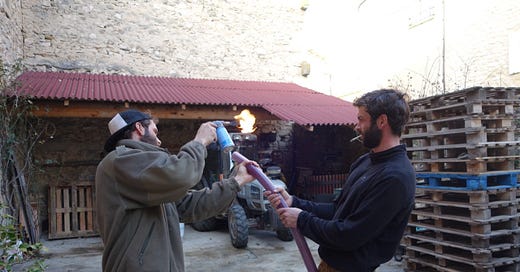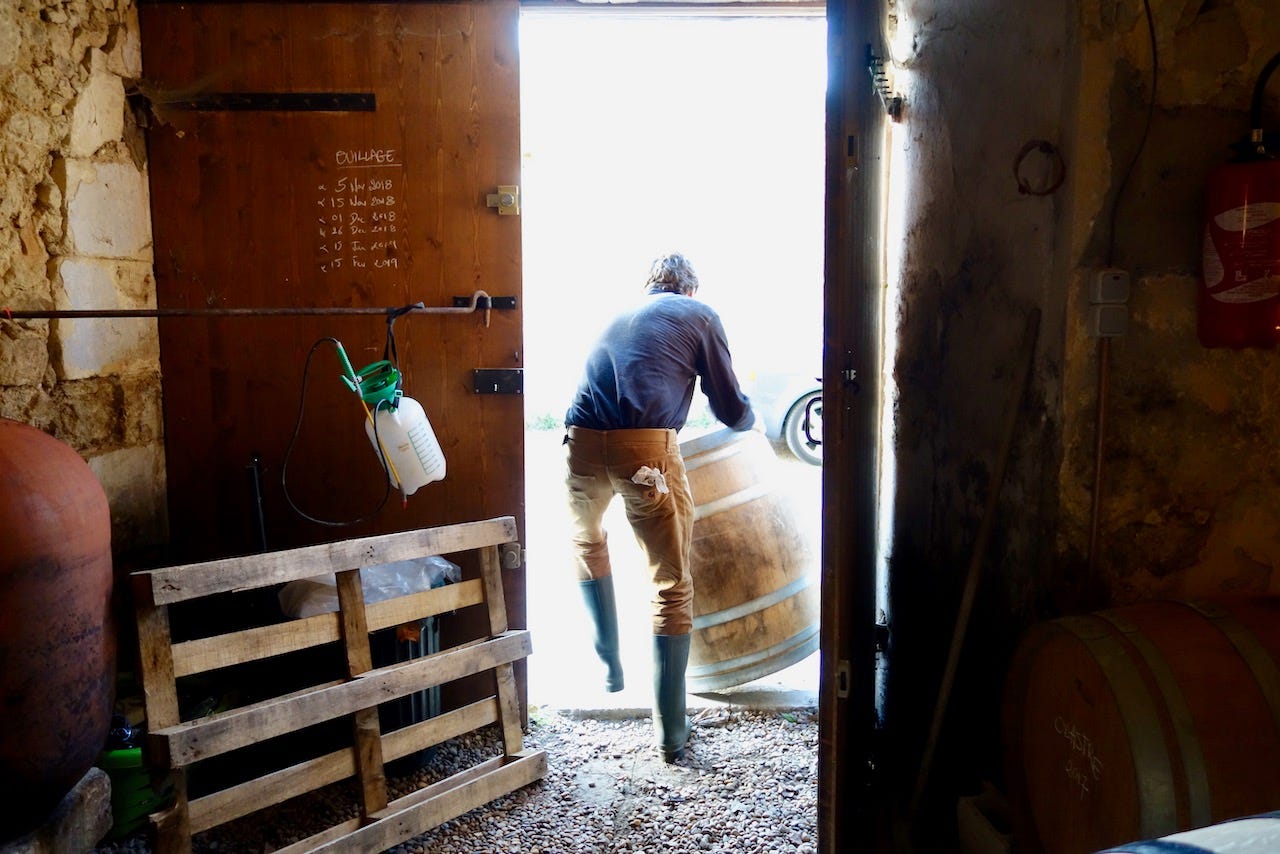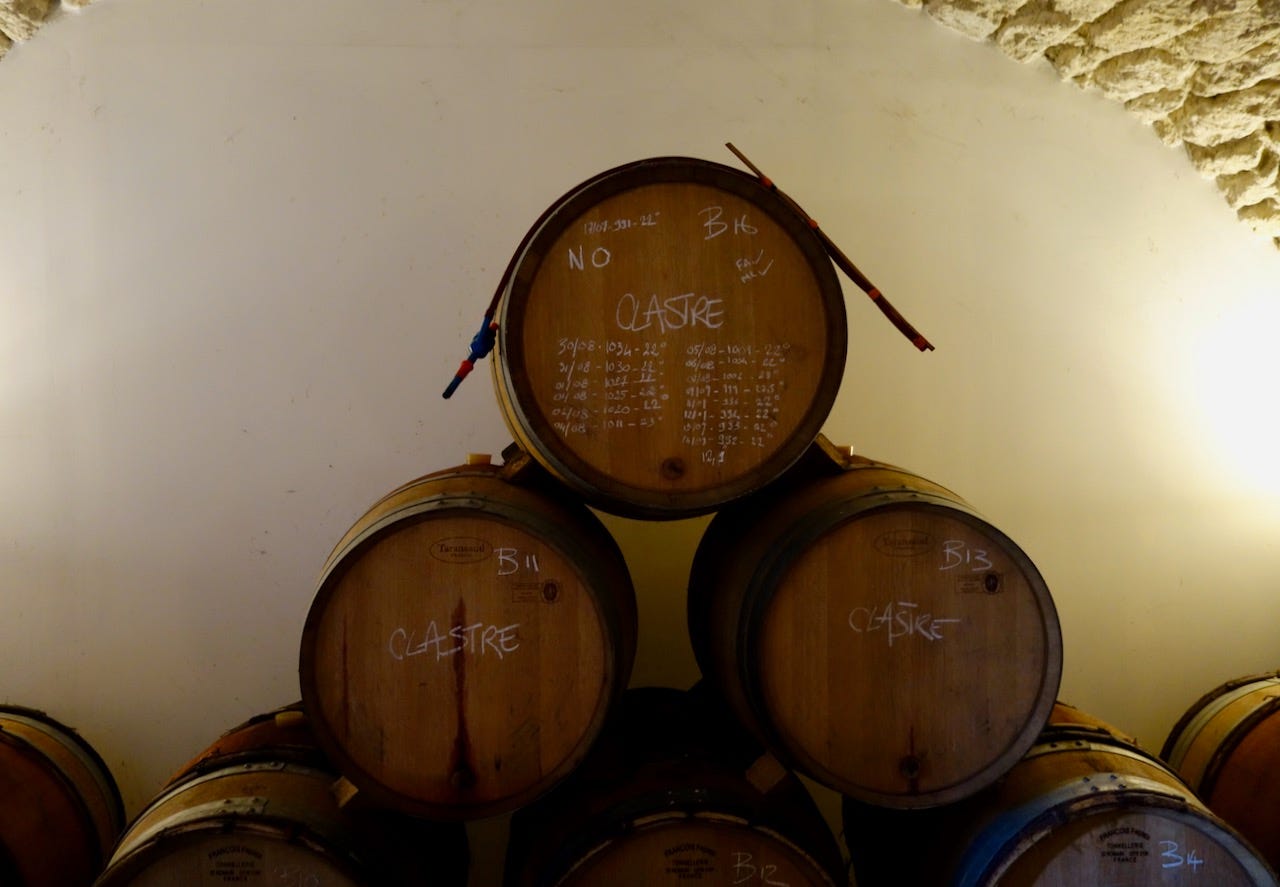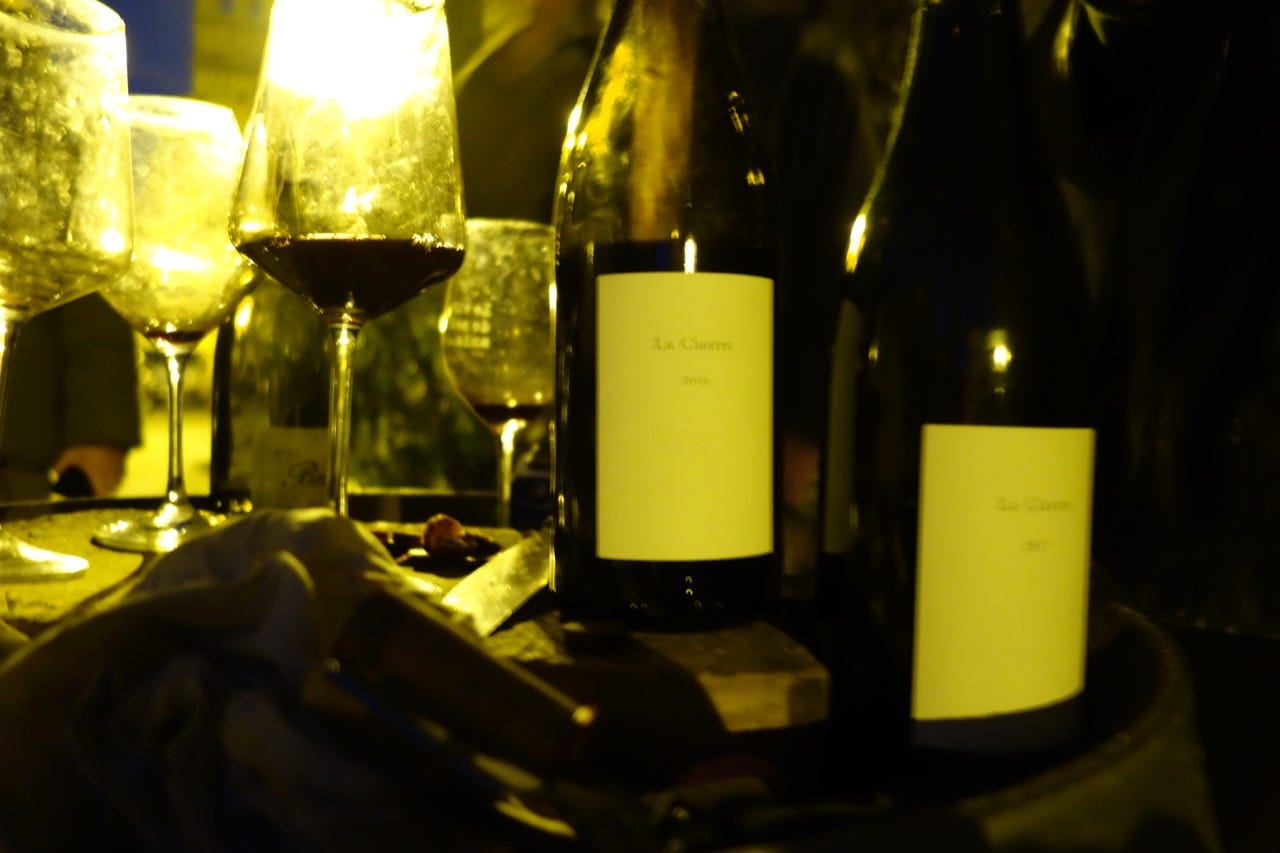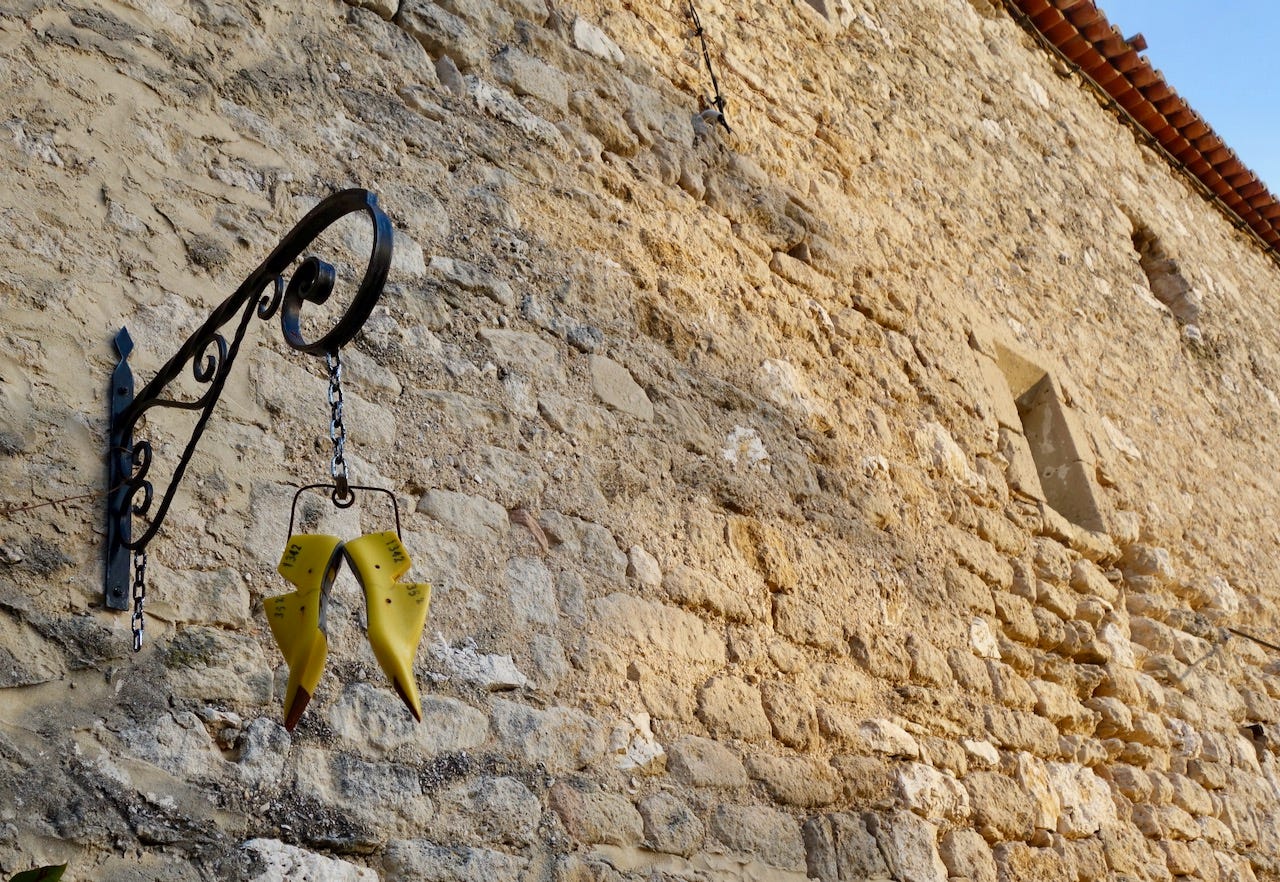GARD - Les Frères Soulier
The brothers' oeuvre contains some of the most complex, feather-light Rhône winemaking I've yet tasted, as well as a plainly noble patch of syrah terroir.
One of the more exciting frontiers in French natural wine in recent years has been the emergence of an experimental wine scene in the Gard, the southern Rhône region west of Avignon, spanning from below Ardèche to a sliver of mediterranean coastline at Port-Camargue. When I had lunch with Tavel's Thibault Pfifferling last July, he rattled off a host of names of like-minded neighbours - many of whom I'd already heard of, without until then having understood quite how close they were to one another, both geographically and ideologically. This "avant-Gard," to coin an obvious phrase, includes Les Frères Soulier, Guillaume and Charles, who I had the occasion to visit in late February.
Of late they've mostly been identified, for better or for worse, with a cheeky Coca-Cola inspired label they employed for a 2018 primeur of cinsault and clairette.
In fact neither this particular vin de soif nor its meme-y label are quite a fair indication of the brothers' oeuvre, which contains some of the most complex, feather-light Rhône winemaking I've yet tasted, as well as a plainly noble patch of syrah terroir, on which more later.
The Native Companion and I arrived in the early evening as the brothers were finishing some spring-cleaning in preparation for a bottling. Their cellar is a few steps down the street from their winery in the small Roman village of Saint-Hilaire-d'Ozilhan. It was an unusually warm evening, without mistral, so we tasted outside in the street around a barrel Charles wheeled out for the purpose.
The Soulier brothers hail from a wine-growing family, but have only produced wine since 2015, when they recovered 4ha of the 40ha their father once farmed in the area. He had sold the vines a few years before, at a time when Guillaume Soulier worked as a landscaper, and Charles Soulier lived abroad, working in corporate events production. Since deciding to return and make wine together, Charles and Guillaume have purchased and planted more vineyards, bringing their total surface to 10ha, which they farm organically, mostly with horse-plowing. Guillaume primarily handles vineyard work, while Charles, who previously worked at Mas de Daumas Gassac, primarily handles vinification.
For such young winemakers, the Souliers have impressively firm, radical principles in vinification. No machines are used at the domaine, meaning nothing is pumped, and everything is hand-pressed with an old vertical press. After pressing, musts are barrelled on their gross lees, and are never racked. Vinification is sulfite-free and nothing is filtered or fined before bottling.
As of 2017, the Souliers' range focuses on very light reds, rosés, and, most unusually, a menagerie of curious oxidative experiments. The latter include a non-ouillé 2018 blanc de noir of grenache, and a very delicate, low-alcohol 2016 blanc de noir of cinsault, also non-ouillé, aged in a barrel that had contained carthagène, a traditional local ratafia-type beverage comprised of 80% wine must and 20% wine distillate. Both were tasted from barrel.
Asked to explain the appeal of blanc de noir wines, Charles responds, "Why not? I don't have whites."
The brothers evince a surprisingly precocious mastery of light reds and rosés, so far be it from me to begrudge them any experimentation. Like their avant-Gard peers Seb Chatillon and Valentin Vallès, the Souliers often employ what is known in their circle as "la trempouillette," or 'a little dip,' a technique adapted from the immersive intracellular fermentation method of Daniel Sage in the Haute-Loire. (See here for my recent article on the technique in The Feiring Line.)
"I start with a carbonic maceration. Then, when it’s started, and we sense that the fermentation has started in the berries, I do another pressing, with the same grapes that were in the parcel, and I fill the tank and my grapes with direct-press juice," explains Charles. "To break the slightly too-carbonic dynamic that can give a malic and a nauseating bonbon thing that I don’t like. It seals the tank, and plus you start to extract a bit of stems."
The technique is on marvelous display in many of their 2018 cuvées, from their "La Clastre" rosé, a short-maceration rosé of syrah, to "L'Oume," a light red from co-planted grenache, syrah, and cinsault. Both wines hold juiciness, length, and complexity in supreme balance, with nary a glycerolic note nor a whiff of acetate, the two chief stumbling blocks of intracellular-fermented southern reds.
The Souliers are in the habit of bottling these and other consistent single-vineyard cuvées with very handsome sober white labels, somewhat reminiscent of those of Jean-Marc Brignot. "It was a wish to get away from the dumb puns," explains Charles. (For their more experimental cuvées, the brothers enjoy collaborating with local artists.)
The finale of the evening, for me, was a bottle of "La Clastre" rouge from 2016, a year when the Souliers had vinified it as a more traditional red wine, with some destemming as I recall. Tasting single parcels across vintages and vinification styles is a great way to hone in on a terroir. In this case, something of the old limestone soils of "La Clastre" shows through no matter how its young syrah is vinified: an herbal or eucalyptus note amid the buoyant, fine-grained black olive fruit.
This was the third and last tasting of a long day for the Native Companion and myself, but the sheer quality of the wines and the company made me loathe to leave. Towards the end of the tasting, the barrel outside the Soulier's cellar became something like a miniature social hub for the village, with a handful of neighbours dropping by to join us for an impromptu apéro. There seemed to be more young people than I would have thought possible for such a small village. It bodes well for the Souliers' future projects, among which is to organise a multidisciplinary arts festival in the nearby quarry of the nearby Pont de Gard.
Les Frères Soulier
rue des Ramparts
30210 SAINT-HILAIRE-D'OZILHAN
FURTHER READING
Some nice photos of the Soulier brothers in this Aug. 2016 post at LaDivigne.
The fellow at Gourmet Piqueuer lauded the brothers' 2015 "La Clastre" in this Feb. 2018 post.
A 2016 video interview with Charles Soulier at Excuse Me I'm French.
My 2019 article for Alice Feiring's The Feiring Line on immersive intracellular fermentation.
My 2018 interview with Thibault Pfifferling at Sprudge Wine.

